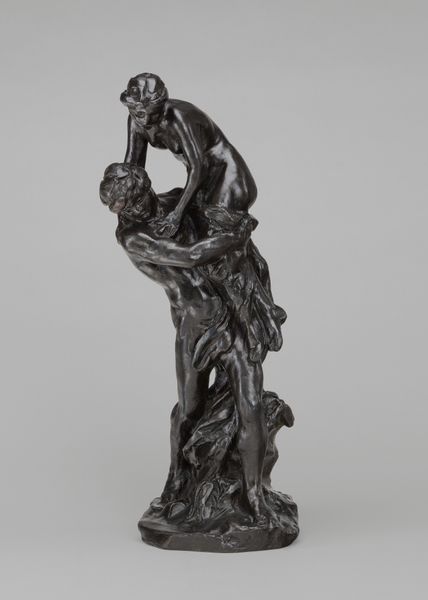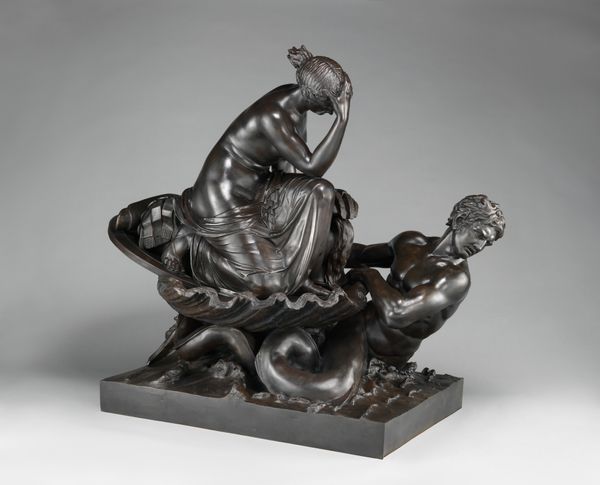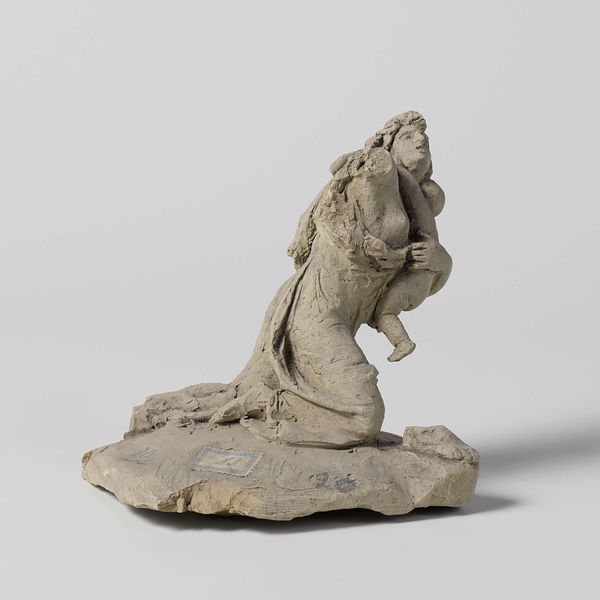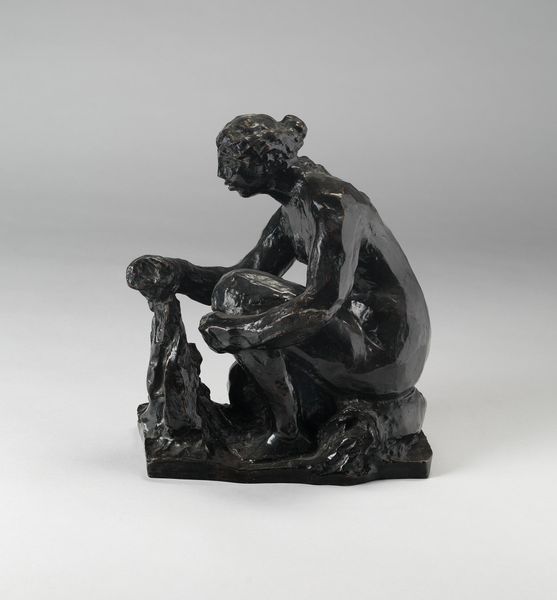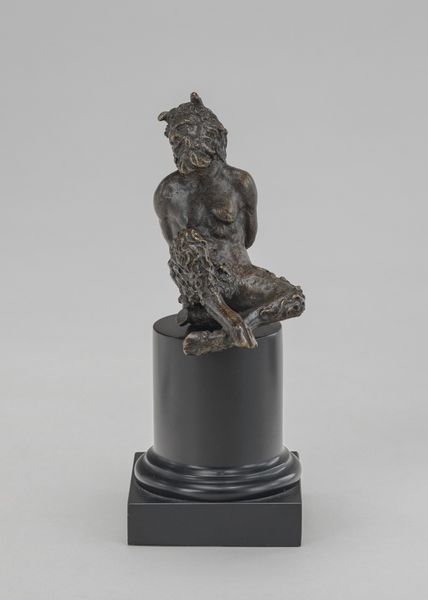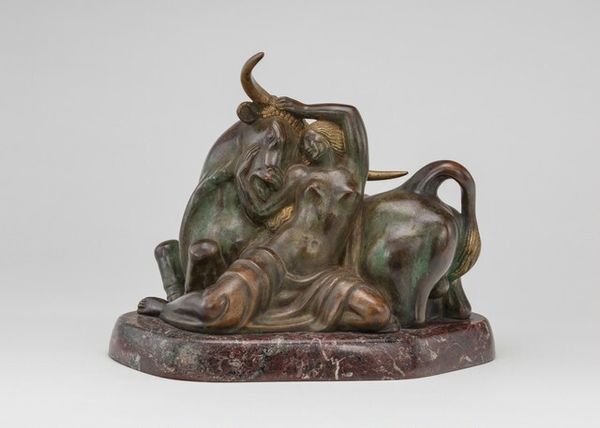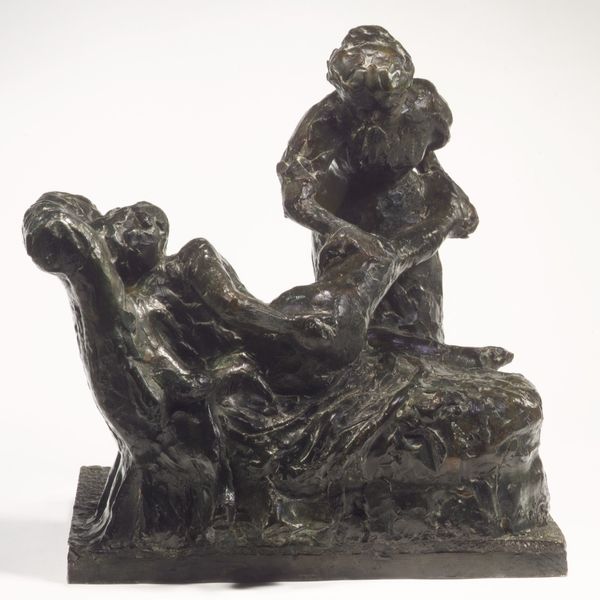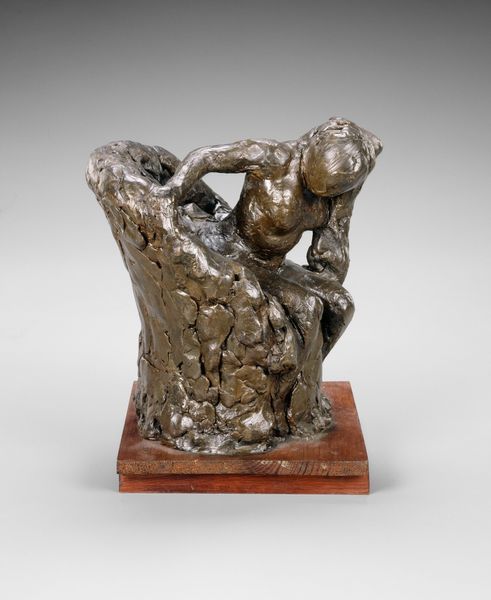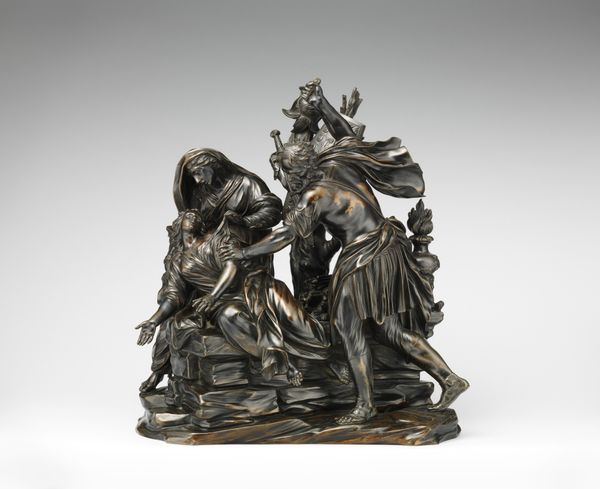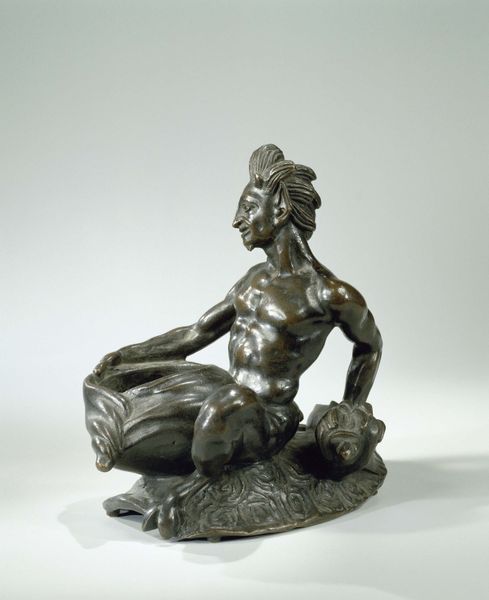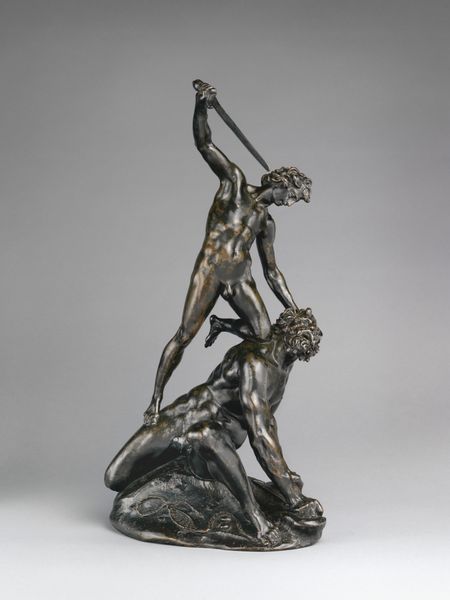
Dimensions: overall: 43.2 x 45.8 x 31.8 cm (17 x 18 1/16 x 12 1/2 in.)
Copyright: National Gallery of Art: CC0 1.0
Curator: Oh, there’s such a fluid kind of melancholy here, isn't there? This bronze... almost feels like captured emotion, hardened into form. Editor: Indeed. We’re looking at "The Sirens," a bronze sculpture completed by Auguste Rodin before 1920. And right away, I'm struck by the positioning of these figures – a cluster, you could even say – and how Rodin has presented the fraught concept of womanhood. Curator: Fraught is definitely the word! Those tilted heads, the reaching limbs… There’s a yearning there, wouldn't you say? A plea? Are they seducing or suffering, maybe even a bit of both? Rodin had such a talent for capturing ambiguity in bronze. I am transported back to thinking about those myths, which aren’t stories about sea monsters at all but warnings about destructive femininity. Editor: Right! The patriarchal narratives place blame for sailors' shipwrecks on these alluring figures. I see "The Sirens" as actively disrupting this misogynistic tradition. It demands we confront societal projections of female power and sexual agency. It's quite a revolutionary reclaiming, perhaps. Curator: Revolution in a Rodin! How amazing, I never thought about his artwork in these terms before, yet the concept sings! And let’s not forget, Rodin wasn’t exactly known for simple answers, was he? There’s a push and pull. Editor: Yes, he often juxtaposed intense realism with fragmented, unfinished forms. The partial, the fragmented... these are actually ways that Rodin challenges classical beauty standards, perhaps critiquing a certain... perfection. Curator: That unresolved quality keeps you searching. He invites us to look for those fault lines. Beautiful bodies, flawed realities. The light seems to catch every nuance... Almost as if the bronze itself is breathing. It’s mesmerizing! I must say I love his capacity to create complex women. It resonates even more, having this in mind now! Editor: This close inspection also allows us to acknowledge and explore how even so-called classics have intersectional entry points. These bodies aren't just objects; they mirror, they question, they resist. I find Rodin especially relevant when reconsidering our narratives. Curator: Thank you for opening a new doorway into this stunning bronze and one of my absolute favourites. I’ll carry these observations of resistance when I now gaze upon “The Sirens” forever. Editor: Agreed! These dialogues encourage precisely this — for us all to return, with renewed eyes, and continuously unravel these layers together.
Comments
No comments
Be the first to comment and join the conversation on the ultimate creative platform.

